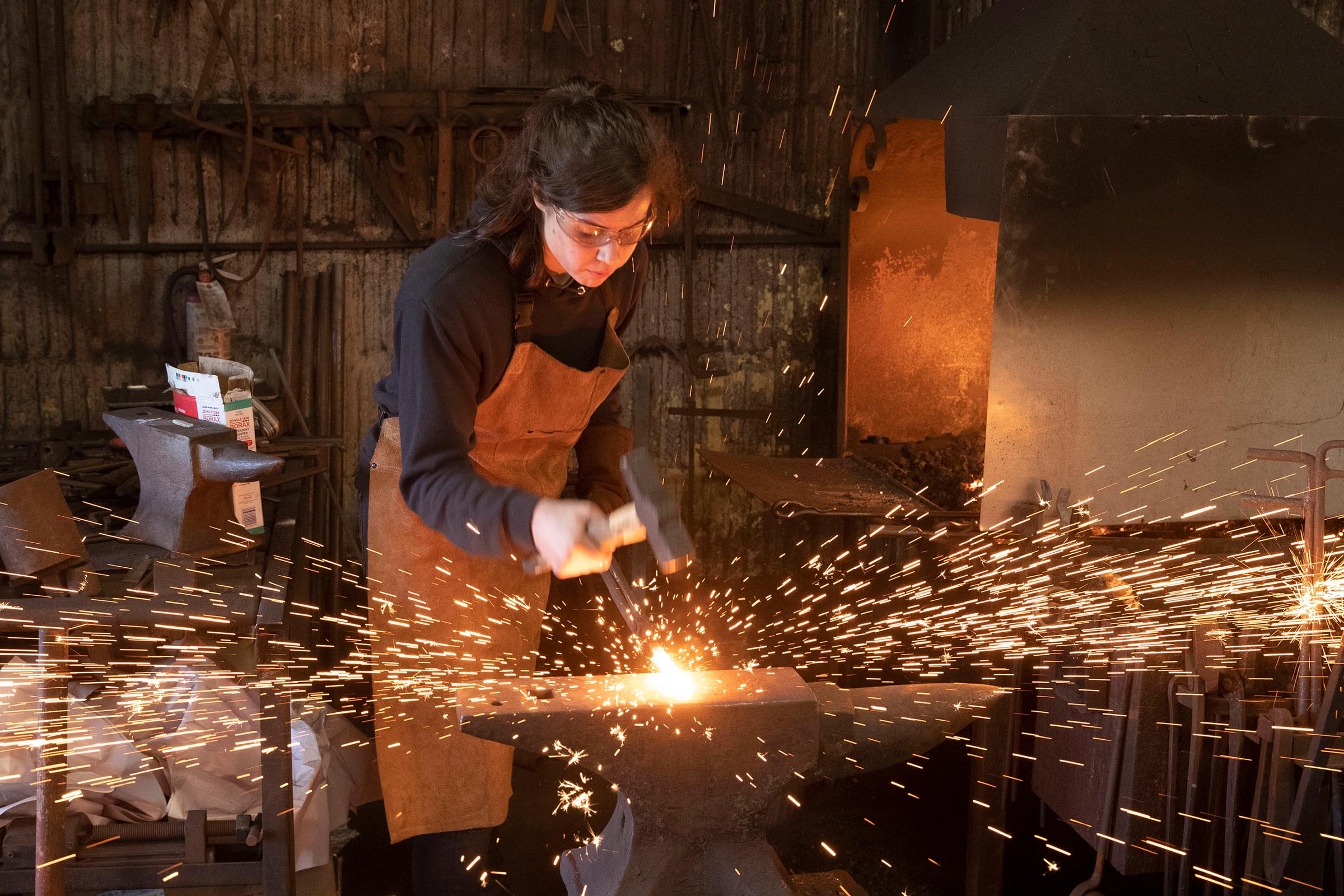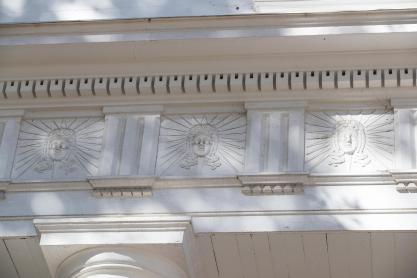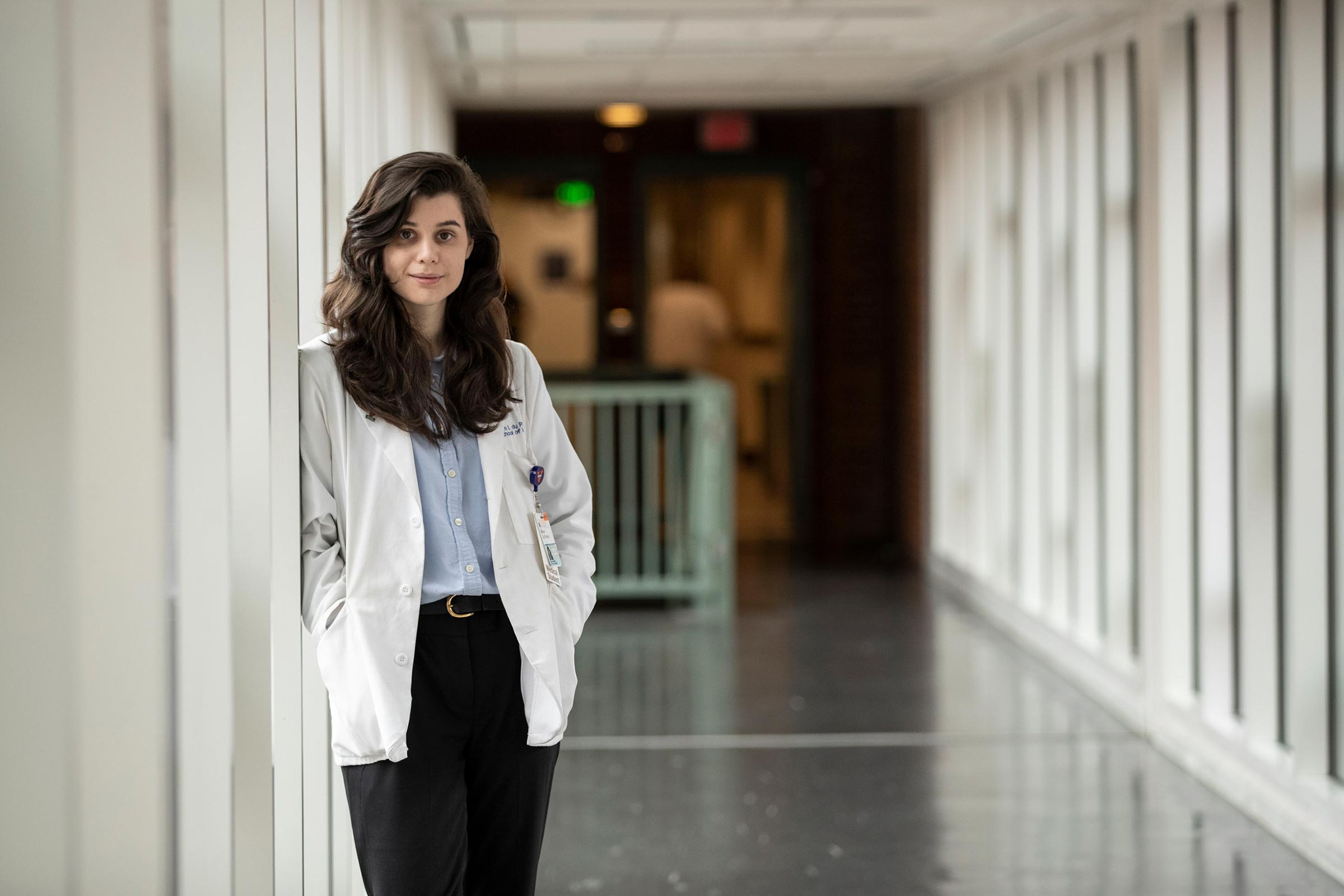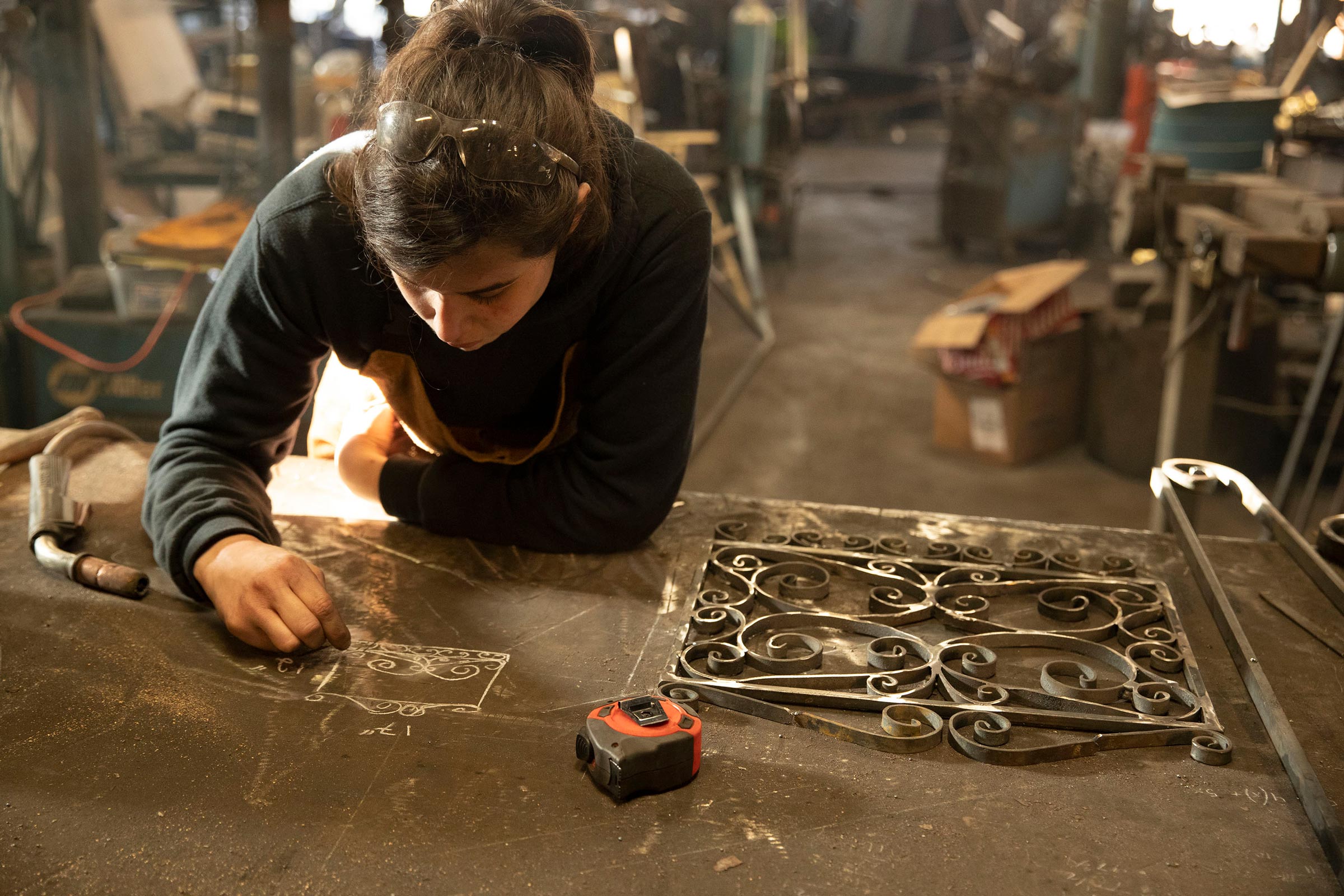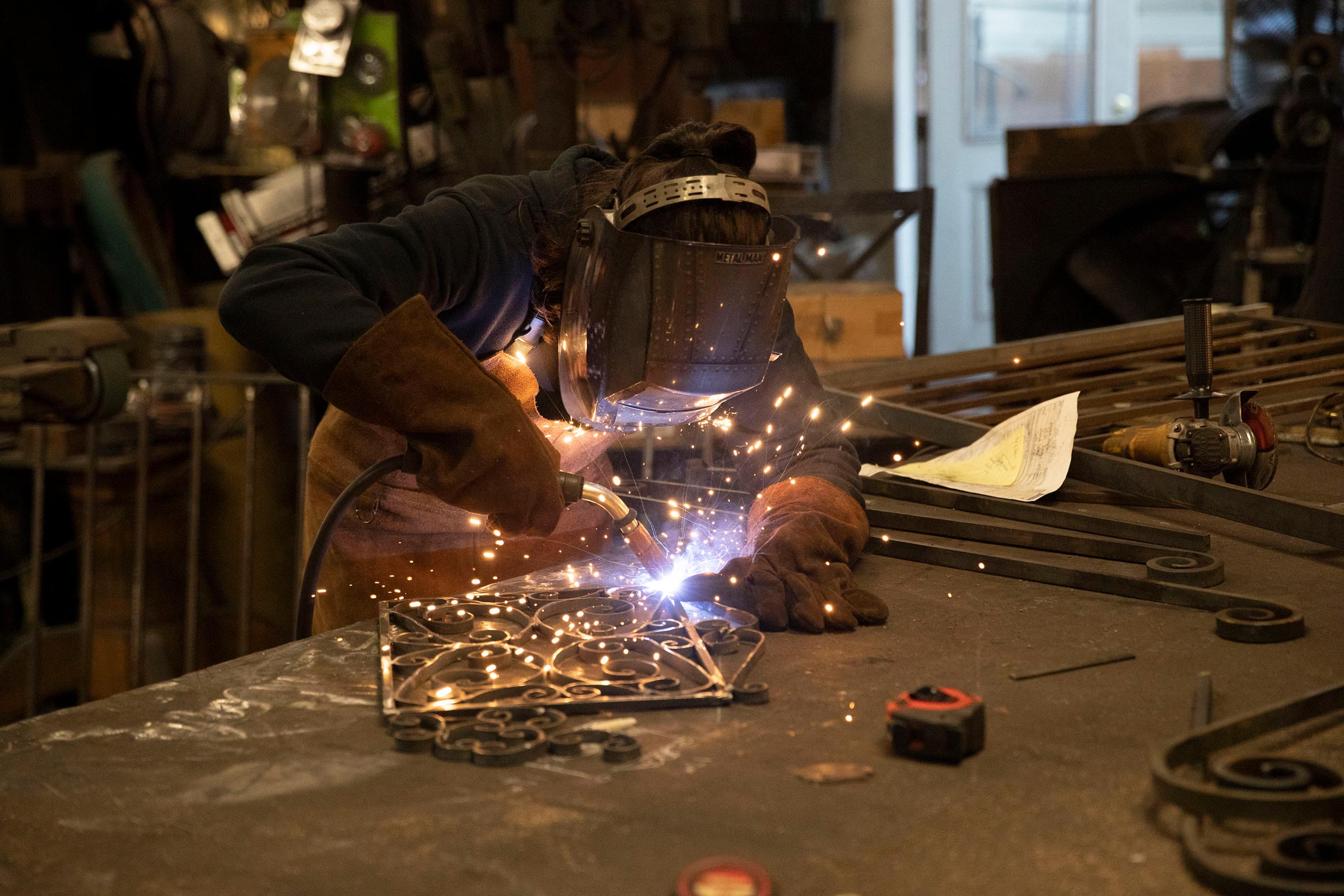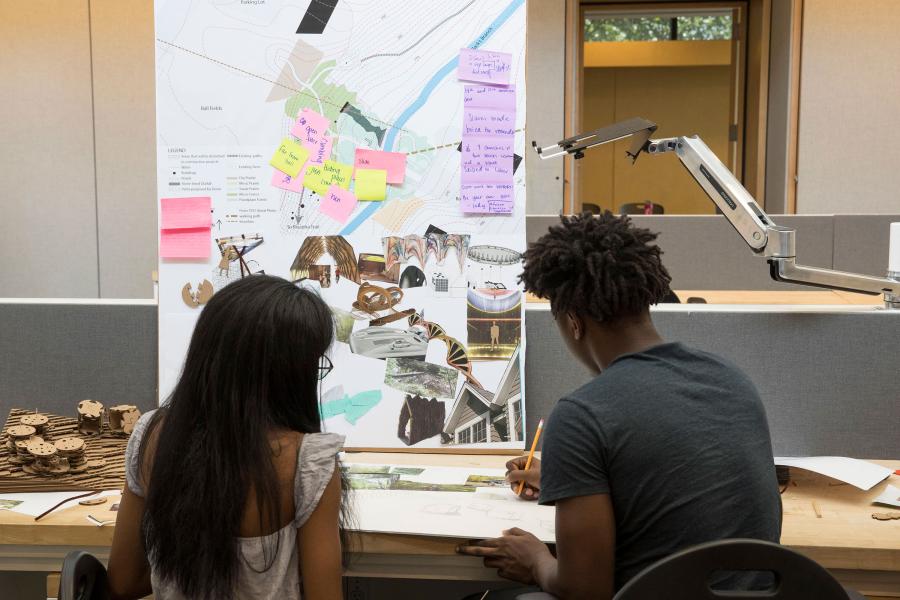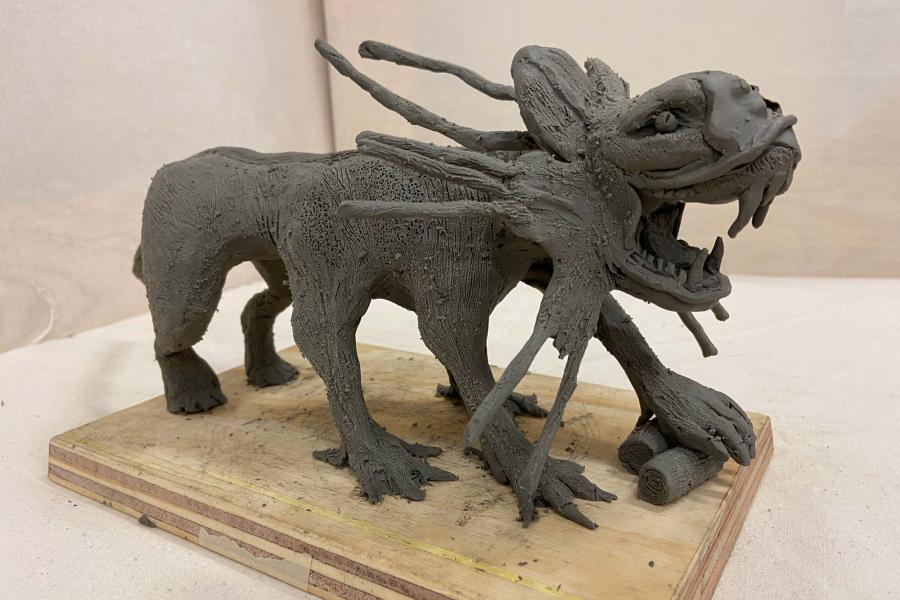Du Plessis, a native of Dublin, Virginia, (“We have a population of 2,000 people and 30,000 head of cattle, so Charlottesville is the big city for me”) transferred into UVA as a second-year undergraduate student and graduated with a biochemistry degree in 2019. She found the Blacksmith Club early on at a student activities fair.
“The first day, I was hooked,” she said. “I would really look forward to Fridays because it gave me a hands-on artistic outlet like no other.
“Surprisingly, there’s a lot of chemistry involved with blacksmithing, so I could relate what I was learning in my courses with what I was doing at the forge, and that was really cool.”
The club works out of The Stokes of England Blacksmithing Company in Keswick, run by head blacksmith Steve Stokes. The forge is in a converted 1901 railroad warehouse once visited by James Dean while he was in town filming “Giant” in 1955. Stokes has hosted the club since it started in 2013.
In blacksmithing, as in medicine, the tools are important, and du Plessis treated herself to a four-pound German blacksmithing hammer that she named “Juanita.”
“I wanted my own hammer because it becomes a part of me and an extension of myself,” she said. “It is my hammer, and I bring her [Juanita] with me every time I go to the forge. I even brought her it with me when I went to the [Medical College Admission Test]. Weighing in at four pounds, she’s a very voluptuous woman and gets the job done.”
While she is passionate about blacksmithing and the UVA Blacksmithing Club is about one-third women, du Plessis said that, in general, female smiths are unusual.
“In the actual blacksmithing profession, it’s pretty rare to see a woman, because it still has the physical aspect of it,” she said “You can still use power tools, but it is a traditionally male-dominated profession.
“Back in the day, a lot of women were jewelers because that didn’t require as much strength and that was considered acceptable for them to do that, so that is a branch point of blacksmithing you will see more women in. And we do have a few jewelers’ anvils at the forge, too.”
The blacksmithing club comprises about 50 members of the UVA community, but there is space for only about six people to work at the three anvils in the forge during the club’s Friday afternoon sessions.
